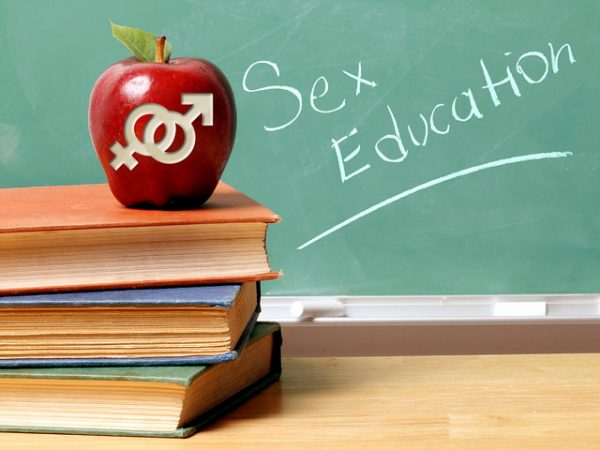
Sex education is a contentious subject in U.S. politics. Before Obama’s presidency, the federal government only funded abstinence education, but in 2009 Obama created the Office of Adolescent Health and diverted some of these funds to create an approved list of practices shown to prevent teen pregnancy (several sources show abstinence-only education does not) through research. With Trump as president, the future of sex ed is an open question, but sociologists can offer some insight regarding what we already know.
Public sex education or “social hygiene” appeared in the U.S. at the turn of the 20th century in response to concerns about increasing urbanization and growing sexual temptations. During the 1960s and 70s, sexual cultures in the U.S. underwent further shifts, influenced by feminism, youth culture, and the gay rights movement. However, anxieties about sex, especially for youth in the U.S., remained. Debates about what kind of sex education to provide for youth seemed to occur between two poles — sexual liberals who supported a comprehensive sex education in schools and sexual conservatives who supported abstinence-only education.
- Jeffrey Moran. 2000. Teaching Sex: The Shaping of Adolescence in the 20th Century. Cambridge, MA: Harvard University Press.
- Kristin Luker. 2007. When Sex Goes to School: Warring Views on Sex–and Sex Education–Since the Sixties. New York: W. W. Norton & Company.
- Janice Irvine. 2004. Talk about Sex: The Battles over Sex Education in the United States. Berkeley: University of California Press.
No matter which type of sex education is implemented, sex ed is ultimately about regulating youth sexuality. Political actors and popular conversations alike frame youth sex as a social problem that requires intervention. Much of this discourse focuses on sex as a danger for children and young adults. Thus, sex education in the U.S. draws on an assumption of risk, relying on prevention-based education.
- Jessica Fields. 2012. “Sexuality Education in the United States: Shared Cultural Ideas across a Political Divide.” Sociology Compass 6(1): 1–14.
However, sex educators and the curriculum they use do not assume all children are equally innocent or at risk. Scholars show that sex education often draws on racial stereotypes of youth of color as sexually deviant. Youth of color are “adultified” and thus perceived as more sexual than their white peers. For instance, teachers often characterize African American girls as sexually opportunistic and assume Latina teens are inherently at risk of teen pregnancy. Further, boys are assumed to be sexually aggressive, and girls are held responsible for dealing with boys’ desires.
- Jessica Fields. 2008. Risky Lessons Sex Education and Social Inequality. New Brunswick: Rutgers University Press.
- Lorena García. 2009. “‘Now Why Do You Want to Know about That?’ Heteronormativity, Sexism, and Racism in the Sexual (Mis)education of Latina Youth.” Gender & Society 23(4): 520–41.

Comments